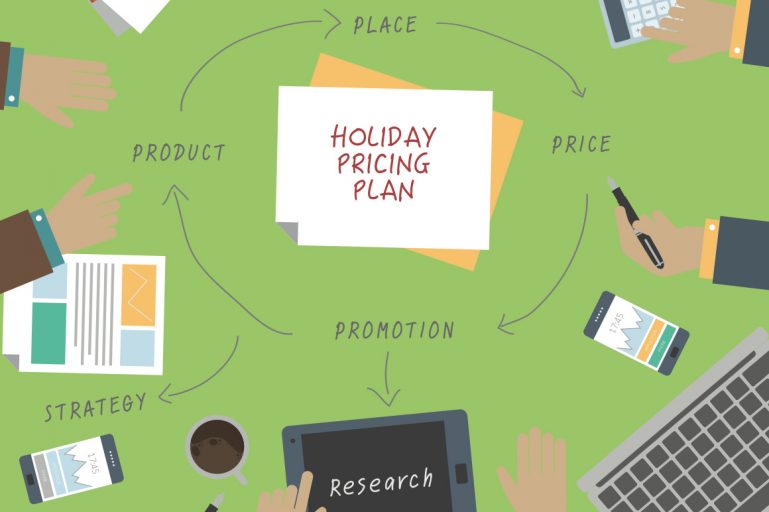
How to Take the Guesswork Out of Holiday Pricing Using Your POS System
It’s that time of year again: eggnog, gingerbread, and holiday pricing. Though you probably haven’t started cooking yet, you might have lent a thought or two on how to go about pricing your items this holiday season.
But if not, that’s OK. We’ve got you covered. The good news is that your POS system is a wealth of knowledge to be leveraged during the holidays. If your pricing strategy needs a jumpstart or a little inspiration, here are a few key practices to keep in mind when the wrapping paper and ribbon starts to fly.
Identify Your Best and Worst Seller
It might seem like a no-brainer, but identifying your best and worst selling items is the first step for any holiday pricing strategy, especially if discounts will be involved. It might seem obvious to slash prices on your worst selling items — because hey, a dollar in your hand is better than two in someone else’s pocket — but straight discounts aren’t the only way to price slow-moving inventory. Bundling can be a great way to move product that has become hesitant to jump off your shelves. Bundling three slow-moving items together at a discount can often seem like a much better deal to customers than buying one full-price item.
Another way to rid your stockroom of dusty merchandise is to give away less popular products as free gifts when customers purchase either a higher ticket item or spend over a certain amount of money. This can incentivize shoppers to either spend more or take the plunge and buy the item they were originally on the fence about. Because spending $250 on a leather mini skirt seems like a much better deal when a free oversized sweater is included.
Identify Time of Day Slumps
Just as important as keeping track of sales per day is to your pricing strategy, so is tracking sales per hour and by which hours. Depending on what your business sells, it’s likely that some products might sell better at specific times of the day. Leveraging this data and making the data work for you can be the difference between consistent sales and a big profit bump.
For example, let’s say a coffee shop owner notices consistent sales of coffee cake between the hours of 9:00 am and 11:00 am. These sales are what she’s come to expect, and it makes sense. But what if she could sell more coffee cake per day by discounting slices of cake after 2:00 pm? She’d still be still selling her average quantity per day of cake slices but would also be selling additional slices through a discount, ultimately increasing her bottom line.
Have Pricing Strategies Ready on Hand
It’s Christmas Eve and the liquor store down the street does a flash sale of Prosecco. They’re charging $20 dollars for two bottles and your sales of bubbly halt. What can you do? At this point it would be good to know at the drop of the hat how low you can go. Can you start charging $8 a bottle for Prosecco and still make a profit? If you can, that’s great. Do it!
But what if you aren’t in the store? For the person managing your business it would be good for them to know exactly what options are at their disposal. If you were in the store would you pop open a bottle for customers to taste? This is a great marketing strategy but one your staff might not think of or know that they’re allowed to do. Having these strategies figured out ahead of time can save you both the headache and a loss in sales.
So before the holidays roll around, take the time to analyze your POS data and strategize a few potential prizing challenges your store might encounter. Keep these readily available for all store managers and draw up a few guidelines for how and when these pricing strategies should be implemented.
SEE ALSO: The Do’s and Don’ts of Retail Pricing: How POS Software Can Help
Anticipate a Rush
We’re not saying a Wal-Mart at 5:00 am on Black Friday kind of rush. But anticipating some holiday excitement for your sales is reasonable. Make sure you have a good estimate of the quantity of stock you’ll go through during this period. It’s always great to sell out of your stock (hey, that’s the goal), but it’s also important to maintain customer moral and confidence in your establishment. If your customer base continually returns to your store only to find you sold out of their favorite products, sooner or later, they might stop coming by.
To prevent this, you want to make sure that you have enough stock to keep customers happy, but not too much that you are loaded down with stock you can’t sell post-holidays. To accomplish this, take a look at the quantity of the product that you usually sell, as well as any comparable sales you’ve run in the past. If you sold a similar item at a similar discount last year and sold out, it’s safe to say you should have on hand at least the quantity of what you sold, plus some.
A good rule of thumb is to look at how many of the items you sold per day. Let’s say your promotion was due to run for three days, you had 40 units on hand, and sold around 20 a day. Then, you sold out early. It might not have been the best outcome, but you can learn from that data by applying those numbers to this year’s sale.
Assuming your promotion this year will run again for three days, make sure you have at least 60 units on hand. Don’t get us wrong, it’s always good when you are able to sell out of an item, but running out too early can affect your bottom line. Examining past sales will not only help you determine the quantity you need to last you to the end of your promotion, but will also help you determine a number that won’t leave you with excess inventory.
Still looking for more sales advice for the holiday season? Check out Your Sales-Driven Little Helper This Holiday Season.
Want to try ShopKeep for yourself?
Just answer a few easy questions.
Need help finding the right point of sale?
Just complete the form. We’ll call you right back to explain how ShopKeep can work for you.
Hit the ground running.Sprinting, in fact!
Read our free, comprehensive guide, Small Business 101, to learn all you need to know about starting a thriving business.

